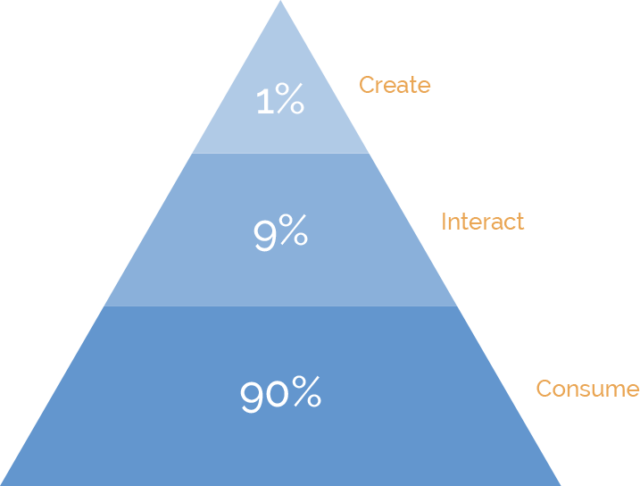As social media changes constantly with the blink of an eye, it must be hard to believe that it can follow a pattern or have a definite structure where content creation and consumption is concerned.
However, the 1% rule of the internet, less popularly known as the 90-9-1 rule is still applicable roughly, if not accurately to all internet content. And this information can be surprisingly helpful to monitor personal content and presence on the Internet. But what is this rule all about?
The 90-9-1 Rule
The 1% rule, developed by bloggers Ben McConnell and Jackie Huba in 2006, says that only 1 out of every 100 people on an average creates content on the Internet, the others only consume it.
As an extension, the 90-9-1 rule says that out of every 100 people on the Internet, only 1 creates content, 9 people engage with it, and the rest 90 just lurk, that is, consume it without any reaction or reciprocation. Initially, the research that supported this rule was based on Google, Yahoo, YouTube, and other health communities.
The Facebook reach of a post of a page is a live example of this rule, explaining why there is often a huge difference in its reach, as compared to the engagement, that is, the likes and comments.
However, the rule applies to individual communities and not the internet as a whole. This means that a particular user might be an active content creator on Quora, and might just be a lurker on Facebook.
How Can It Be Used?
Even though the rule might not necessarily be accurate, it can be used to judge the reach and engagement of a post before it is published, so that you don’t have unrealistic expectations out of the content you create.
It can be used to monitor your content on social media, and create online forums with increased participation more effectively.
Is it relevant?
One of the unique qualities of the Internet is that it is dynamic. So does that mean that this rule of thumb created 10 years ago holds no relevance today? It does. It is even applicable to websites like Pinterest, Instagram, and Snapchat, which make it so easy to create content.
Even though the users may be in the 1% bracket when they join the community, for example, a person may share their picture immediately after signing up on Instagram, gradually, they shift to the 9% base and soon, the 90% base.
This can only be changed to an extent. You can create more participation by ensuring a great experience for users whenever they share content, but it only goes as far as that. Ultimately, it is the online habits of the user which really make a difference when participation is concerned.
Still, this rule can help all bloggers, graphic designers, and artists out there on the Internet trying to create an online presence by helping them increase their organic reach.
To know more about the rule, watch this video:
How do you think this rule can be changed? Tell us in the comments below.
While you’re at it, you might also like:



































